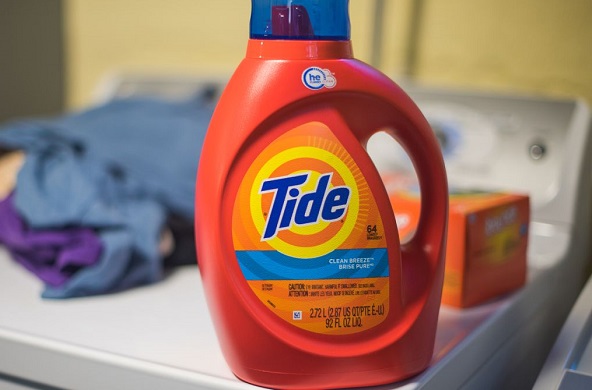Linear Alkyl Benzene Sulphonic Acid) LABSA( is one of the main raw materials of the detergent industry. It is used in the production of various detergents and emulsions, such as washing powder, dishwashing detergent, detergent gels, and liquid soaps.
LABSA is non-flammable and environmentally friendly. The physical appearance of this substance is brown liquid. It is non-volatile with the power of absorbing moisture.
ArChem provides LABSA and other raw chemical materials such as sodium nitrate, Soda Ash, and caustic soda for various industrial applications. for further information please contact our technical sales team in ArChem.
What is LABSA?
LABSA is an anionic surfactant, which is used in a variety of detergents and emulsifiers such as washing powder. It is synthesized through the process of sulfonation. Sulfonation reagents include sulfuric acid, chlorosulfonic acid, sulfamic acid and diluted sulfur trioxide. LABSA is soluble in water, alcohols, glycols, glycol ethers, esters, ketones, aromatic and aliphatic hydrocarbons.
Linear Alkyl Benzene Sulphonic Acid is a corrosive substance. Contact with the skin may cause burns and it is harmful if ingested.
What is the detergent industry?

Detergents are surfactants with high-quality cleansing properties, when diluted in water. The main ingredients of detergents are Alkylbenzene sulfonates and its compounds.
We use detergents in our daily life. Detergent is a chemical compound, which is used as a cleaning agent. Detergents include soaps, laundry detergents, dishwashing detergents, and other cleaning agents with various chemical compositions. Laundry detergents have 40 % of the overall market, while soaps for 20 % and dishwashing detergent for 15 %. Laundry detergents come in powder as well as liquid form, and may contain bleach additives.
In the production of detergents, lots of chemicals are used. Two types of chemical ingredients used for making detergents, liquid and solid. Solid materials include soda ash and STPP. Examples of liquid chemicals are LABSA and caustic lye.
Detergent washing powder contains between 9 and 17 ingredients, liquid and solid. Every component has a specific role, these chemicals are mixed to make the best out of the formula’s properties. Surfactant is the main component of detergents. It promotes washing ability. Other ingredients serve to perfect the formula. Some of them include optical brighteners, pH modifiers, and other supporting ingredients.
Advantages of LABSA in detergent industries
LABSA has many advantages in comparison with other surfactants. It is mostly used in the detergent industry due to its excellent foaming and cleaning properties. Some advantages of using LABSA in the detergent industry include:
- Cleaning power: LABSA is a highly effective cleaning agent that can remove dirt from various surfaces.
- Cost-Effective: LABSA is a relatively inexpensive alternative to other surfactants used in the detergent industry.
- High foaming ability: LABSA can produce high amounts of foam, which is preferable in many applications.
- Good biodegradability: LABSA is biodegradable, so it breaks down naturally over time and does not harm the environment.
How to optimize LABSA use in detergent formulation?
LABSA is a key ingredient in laundry detergents, due to its ability to emulsify oil and effectively remove stains from fabrics.
Frequently, the percentage range of LABSA in detergent powder is 5%-28%. The amount of 5%-12% is usually considered low-class quality. The range of 12%-16% is a mid-class quality, and 16%-28% belongs to the high-class grade.
In order to optimize LABSA use in detergent formulation, some factors should be considered. In the following, we will discuss these factors:
- pH: since LABSA has the best performance at a pH higher than 10, detergent formulations usually have a pH between 10 and 12.
- LABSA concentrations: experimenting with different LABSA concentrations can help produce the best product.
- Temperature: LABSA should be kept in low to moderate temperatures. Different temperatures should be examined for detergent formulation.
- Mixing time: The mixing time for detergent production is variable. It is better to try different times to get the best mixing time.
- Handling and storage: proper handling and storage of LABSA ensure effectiveness.
FAQ
Why LABSA is used in detergent powder?
LABSA easily mixes with water, so it is an effective cleaning agent. Plus, the strong cleaning power of LABSA can remove stains, dirt, and grime effectively.
What is the use of LABSA in detergent?
LABSA is a main ingredient in the manufacturing of detergents. it is an anionic surfactant, which is used in a variety of detergents and emulsifiers such as washing powder. LABSA is used as a washing and mercerizing agent in the textile industry.
Can LABSA be used in the formulation of dishwashing liquids?
LABSA can be used in the production of dishwashing liquids, since it helps to remove food residue and grease from dishes.
What is labsa in detergent formulation?
Linear alkyl benzene sulfonic acid, also known as LABSA, is a synthetic anionic surfactant with many applications in the detergent industries.
